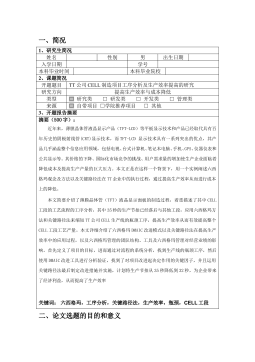基于应用层技术的视频组播系统的研究与实现
VIP免费
合肥工业大学硕士毕业论文
基于应用层技术的视频组播系统的研究
与实现
摘 要
随着 Internet 视频会议和视频点播等多媒体业务的应用日益广泛,传
统的单播传输方式已经不再适应这一类业务的传输特性,于是组播技术成
为研究热点。组播技术的出现解决了网络数据冗余传输的问题,可以有效节
省网络资源。然而 IP 组播由于部署方面的限制以及协议自身的一些缺陷,
使得它至今没能得到广泛的应用部署,于是出现了将 IP 组播的功能提高到
应用层来实现的应用层组播。应用层组播将组播功能由路由器转移到端系统
它的出现解决了 IP 组播存在的一些固有问题,尤其是 IP 组播在部署上需要
路由器支持的限制。本文看到了应用层组播技术在视频系统的种种优点 ,将
深入研究该技术在视频组播中的应用并对其实现。
本论文主要研究面向单源流媒体非交互式应用的应用层组播系统。首先
在充分分析已经提出的各种组播协议的基础上,依据本论文所研究的应用
背景对已经提出的协议作出了相应的改进使其满足本应用的需求,并对其
进行了仿真分析。其次,设计并实现了基于这个协议的原型系统,该系统实
现了组播组的创建,组播组的加入和退出以及节点失效的处理。同时分析对
比 IP 多播拥塞控制模型和应用层多播拥塞控制模型,在面向流媒体应用的
现实条件下,提出一个基于速率的逐跳拥塞控制方案。之后利用 JMF 对软件
的各个模块进行编码实现。
最后对系统从功能和性能两方面进行了测试和分析,测试结果表明协
议设计正确,系统各个模块工作正常,每个接收节点可以接收到较为流畅
的视频流,功能和性能上都达到了最初的设计目标。
关键词:组播;视频;应用层;拥塞控制
1
合肥工业大学硕士毕业论文
Study and Implementation of Video
Multicast System based Application
Multicast Technology
Abstract
With the increasingly widespread of Internet multimedia applications such as
video-on-demand(VOD) and video conferencing, the traditional unicast can no
loner suit the transmission characteristics of this type of business ,so multicast
technology has become a hotpot. Multicast can solve the transmission problem of
redundant data, and can effectively save network resources. However, because of
the restrictions on the deployment of IP Multicast and the flaws of protocol
itself ,multicast has not been widely deployed. Then the application-layer
multicast (ALM) appears, in which the Multicast functions are transferred from
multicast muter to the end system. It builds multicast network directly on the end
system, and don't need special support from the network equipment. It appeared
to solve the inherent problems of IP Multicast, especially the restrictions that the
deployment of IP Multicast needs the support of routers.
This paper mainly studies reciprocal application layer multicast system
facing single source streaming media. Firstly, on the analyze of all kinds of
application layer multicast protocols which have been proposed ,a mended
protocol is to bring forward ,also we analyze it by simulation. Secondly,
archetypal system are designed based on this new protocol. In this system, we
realize the construction of multicast group, join and leave multicast group and the
dispose of node failure. And comparing the IP multicast congestion control and
application layer multicast congestion control, this paper puts forward hop-by-
hop congestion control schema in oriental stream media. At last, it codes every
2
合肥工业大学硕士毕业论文
modules using JMF.
Finally, the functional and performance of this prototype system is tested
and analyzed. The test results show the design of protocol is correct, the system
modules can work correctly, each node can receives fluent video stream, the
functionality and the performance can achieve the initial design target.
Keywords: Multicast; Video; Application Layer; Congestion Control
3
合肥工业大学硕士毕业论文
目录
摘 要............................................................................................................................................1
Abstract.......................................................................................................................................2
第一章 绪论................................................................................................................................7
1.1 课题研究背景...............................................................................................................7
1.2 国内外研究现状...........................................................................................................8
1.3 全文研究内容...............................................................................................................9
1.4 论文结构.....................................................................................................................10
第二章 视频组播系统关键技术研究.....................................................................................11
2.1 流媒体介绍.................................................................................................................11
2.2 P2P 流媒体.................................................................................................................13
2.3 P2P 流媒体技术.........................................................................................................14
2.3.1 媒体数据压缩技术.........................................................................................15
2.3.2 应用层组播技术.............................................................................................16
2.3.3 应用层 QoS 控制...........................................................................................17
2.3.4 流媒体传输协议及媒体同步........................................................................20
2.4 DirectShow 技术研究................................................................................................21
2.4.1 DirectShow 系统结构.....................................................................................21
2.4.2 DirectShow 应用程序开发.............................................................................22
2.5 本章小结.....................................................................................................................24
第三章 单源多点视频组播系统的 分析与设计....................................................................24
3.1 系统需求分析.............................................................................................................24
3.2 应用系统设计思想.....................................................................................................25
3.2.1 系统实现环境..................................................................................................25
3.2.2 应用需求..........................................................................................................26
3.2.3 系统设计的原则..............................................................................................27
3.3 系统的运行结构.........................................................................................................28
3.4 系统功能模块.............................................................................................................29
3.5 多点视频组播服务器.................................................................................................30
4
合肥工业大学硕士毕业论文
3.5.1 组播协议处理模块.........................................................................................30
3.5.2 视频图象处理模块.........................................................................................30
3.5.3 用户管理模块..................................................................................................33
3.6 多点视频客户端.........................................................................................................33
3.6.1 组播组处理模块..............................................................................................33
3.6.2 流媒体数据处理模块.....................................................................................34
3.6.3 用户管理模块..................................................................................................35
3.7 本章小结.....................................................................................................................35
第四章 视频组播协议研究与实现.........................................................................................36
4.1 应用层组播协议的选择.............................................................................................36
4.2 组播原型系统的实现.................................................................................................36
4.3 单源流媒体组播协议内容........................................................................................37
4.3.1 创建组播组.....................................................................................................37
4.3.2 加入组播组.....................................................................................................37
4.3.3 离开组播组.....................................................................................................39
4.3.4 节点失效的处理.............................................................................................41
4.4 网络拥塞控制.............................................................................................................41
4.4.1 应用层组播拥塞控制模型.............................................................................41
4.4.2 面向流媒体的应用层组播逐跳拥塞控制.....................................................42
4.4.3 面向流媒体的逐跳拥塞控制方案.................................................................43
4.4.4 基于速率的逐跳拥塞控制算法.....................................................................44
第五章 应用层组播系统的关键技术实现.............................................................................48
5.1 多媒体服务平台结构................................................................................................48
5.2 组播网络协议的实现................................................................................................49
5.2.1 组播服务层的结构.........................................................................................49
5.2.2 Free pastry 模块...............................................................................................50
5.2.3 组播树管理模块..............................................................................................51
5.2.4 报文处理模块..................................................................................................52
5.2.5 报文的接收与发送.........................................................................................53
5.3 流媒体数据处理模块................................................................................................55
5
摘要:
展开>>
收起<<
合肥工业大学硕士毕业论文基于应用层技术的视频组播系统的研究与实现摘要随着Internet视频会议和视频点播等多媒体业务的应用日益广泛,传统的单播传输方式已经不再适应这一类业务的传输特性,于是组播技术成为研究热点。组播技术的出现解决了网络数据冗余传输的问题,可以有效节省网络资源。然而IP组播由于部署方面的限制以及协议自身的一些缺陷,使得它至今没能得到广泛的应用部署,于是出现了将IP组播的功能提高到应用层来实现的应用层组播。应用层组播将组播功能由路由器转移到端系统它的出现解决了IP组播存在的一些固有问题,尤其是IP组播在部署上需要路由器支持的限制。本文看到了应用层组播技术在视频系统的种种优点,将深...
相关推荐
-
跨境电商商业计划书模版VIP免费
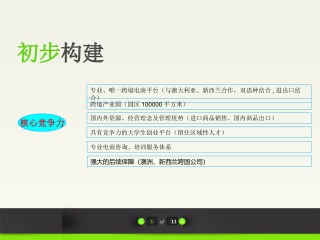
 2025-01-09 9
2025-01-09 9 -
跨境电商方案范文VIP免费
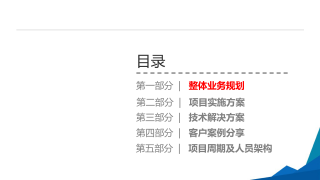
 2025-01-09 6
2025-01-09 6 -
创业计划书VIP免费
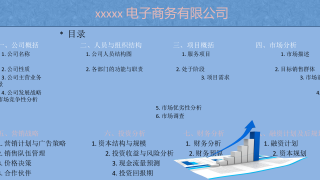
 2025-01-09 6
2025-01-09 6 -
xx生鲜APP计划书VIP免费

 2025-01-09 6
2025-01-09 6 -
跨境电商创业园商业计划书(盈利模式)VIP免费

 2025-01-09 6
2025-01-09 6 -
跨境电商计划书VIP免费

 2025-01-09 9
2025-01-09 9 -
绿色食品电商平台项目计划书VIP免费

 2025-01-09 8
2025-01-09 8 -
农产品电子商务商业计划书VIP免费

 2025-01-09 7
2025-01-09 7 -
农村电商平台商业计划书VIP免费
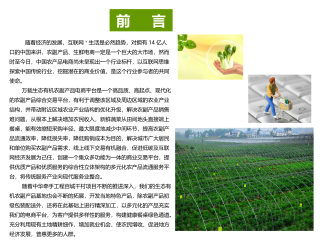
 2025-01-09 8
2025-01-09 8 -
生鲜商城平台商业计划书VIP免费
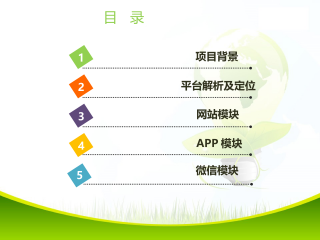
 2025-01-09 7
2025-01-09 7
作者:朱铭铭
分类:高等教育资料
价格:150积分
属性:78 页
大小:6.1MB
格式:DOC
时间:2024-09-20


